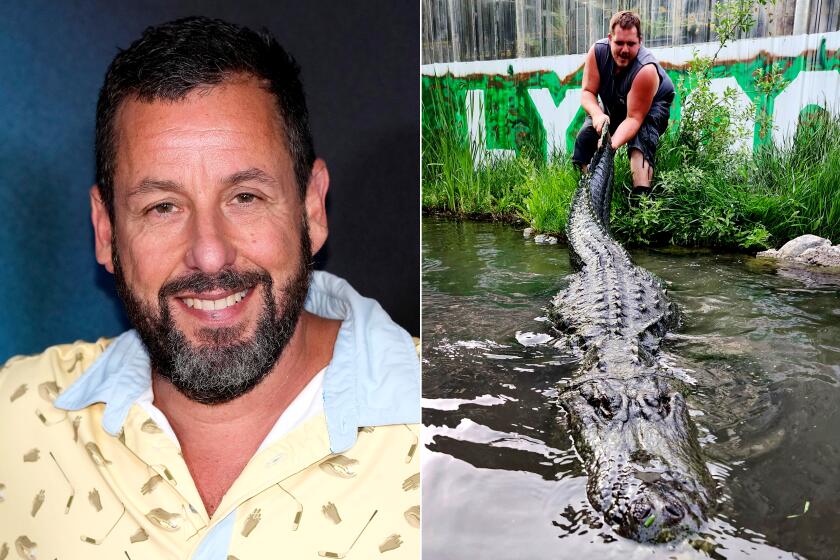Host to Film Folk : Culver Hotel Falls from Glory Days
- Share via
Like the bow of a large ship, the six-story Culver Hotel greets travelers driving along Culver or Washington boulevards in Culver City.
The wedge-shaped, tawny brick structure at the intersection of these boulevards is visible from all directions, glaringly different, yet gracefully conceived for the small triangular plot of land on which it sits.
Culver City, named after its founder, Harry Culver, was incorporated in 1917. Culver encouraged development of banks, schools, country clubs and the six-story Culver Hotel whose roof provided the persuasive realtor with an excellent stage for pointing out to potential investors the available lots from his vast acreage of bean fields.
Other Studios Followed
One sale that would greatly affect the future of Culver City was to film maker Thomas Ince, who moved his Triangle Studios from Santa Monica. The studio would later become MGM.
Other studios soon followed, and by the late 1920s, the motion picture industry was burgeoning in Culver City. The Culver Hotel’s proximity to the studios offered convenient accommodations for out-of-town stars and others involved in film making.
It also became something of a star itself, appearing in numerous movies and television productions from silent films, early Laurel & Hardy comedies to recent television episodes of “Dallas” and “Highway to Heaven.”
During the 1930s, Prohibition and political corruption in Culver City made it an attractive location for nightclubs, which sprouted up for miles along Washington Boulevard. The centrally located Culver Hotel quickly developed a shady reputation as a locale for prostitution, gambling and illegal booze.
The decade ended with the arrival of about 350 little peoplehoused in the hotel for the filming of “The Wizard of Oz.”
Noisy Celebration
Miniature chairs and tables were brought in, giving the hotel’s interior the appearance of a doll house. The mahogany-paneled halls (since painted white) came alive with the cacophony of excited little people who, never having seen so many of themselves in one place before, celebrated noisily into the wee hours each morning.
Disgraced by the decadence of its 1930s past, the hotel never recovered. Not even John Wayne and Red Skelton, who, at different times, owned the building, could restore it to its former glory.
Interest in the hotel was revived briefly when it returned to the screen in the 1979 film “Under The Rainbow.” The bedlam created by the short-statured actors during the “Wizard of Oz’ filming was inspiration for this spoof.
Much of “Under The Rainbow” took place in and around the Culver Hotel and hotel interiors were replicated on sound stages.
When the film was completed, however, the hotel’s future was again placed on a back burner.
According to a representative of Prestige Property Management, current owners of the hotel, the building is a residential hotel occupied by low-income tenants.
With its large rooms, high, carved ceilings, tall windows and upper-level panoramic views of the city, the hotel has piqued the imagination of many investors.
But potential buyers are quickly discouraged by the lack of parking around the building and a law that requires that parking be provided. It would be up to the buyer to purchase adjacent land for a lot.
No Preservation Plan
There are no provisions for preservation in Culver City’s redevelopment plans. Unimpressed by the hotel’s historical significance, one city hall spokesman described the building as non-functioning and decaying.
According to another city official, the dollar is the bottom line--a viewpoint disheartening to preservationists who view the Culver Hotel as one of the few remaining symbols of a city that at one time produced more than half of all American films.
More to Read
Only good movies
Get the Indie Focus newsletter, Mark Olsen's weekly guide to the world of cinema.
You may occasionally receive promotional content from the Los Angeles Times.








